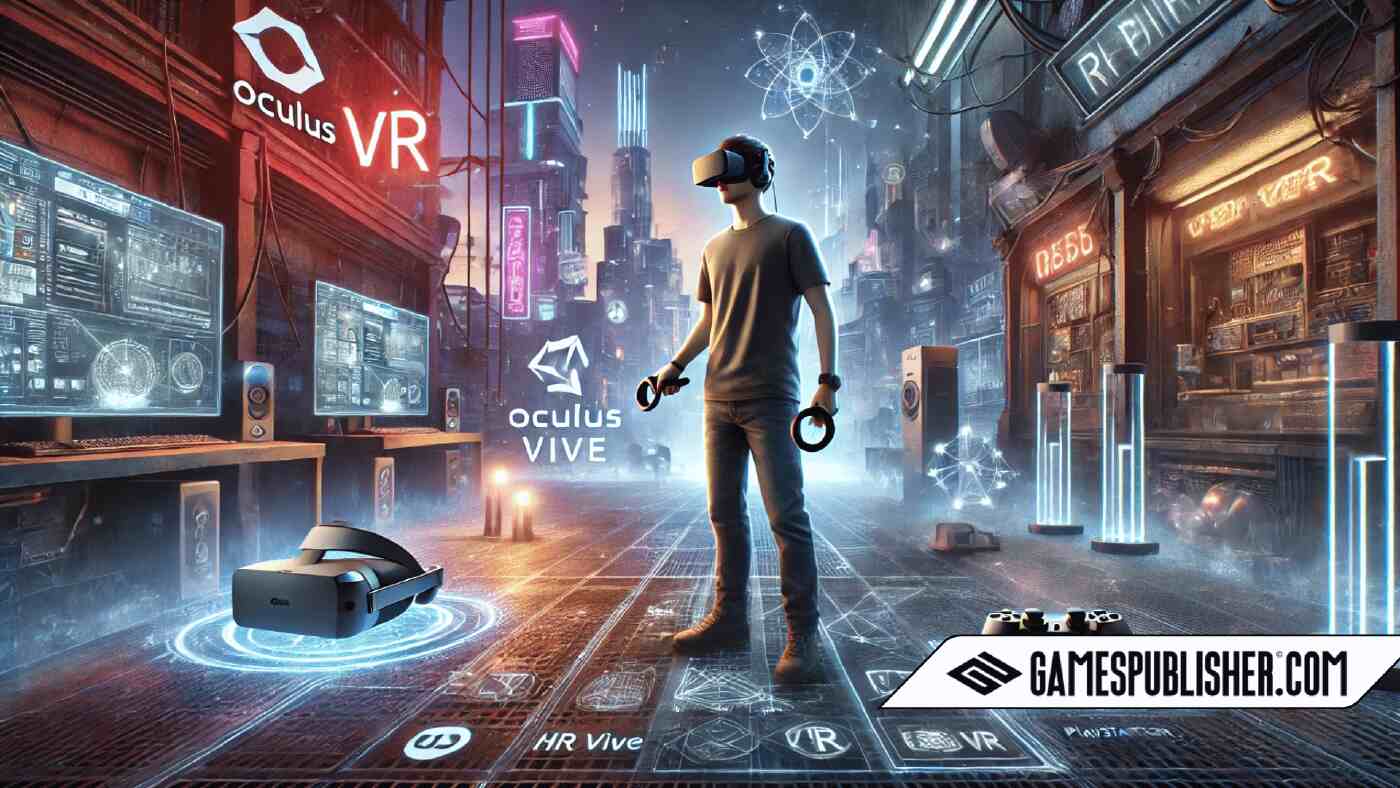Welcome to Gamespublisher.com, your go-to source for insights into the gaming industry. Virtual Reality (VR) has changed how we experience games. It offers unmatched immersion and engagement.
This guide covers the basics of making immersive VR experiences. It covers the tools and techniques involved. It also covers future trends in VR gaming.
Understanding Immersive VR Experiences
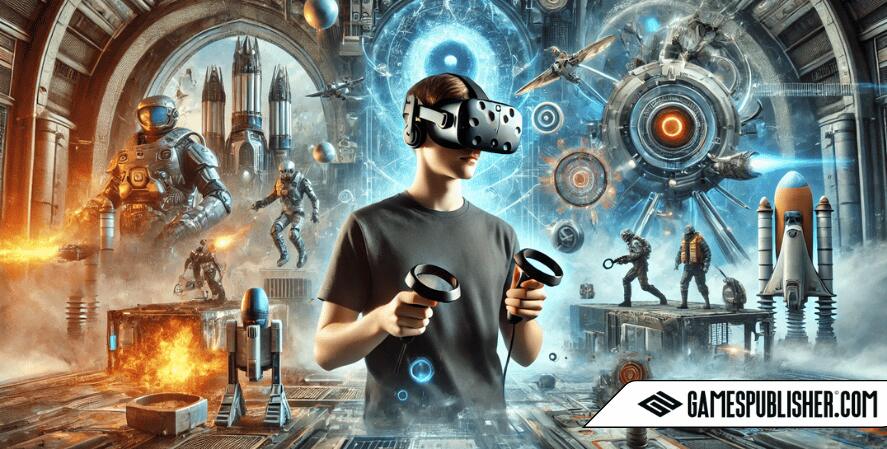
What is Virtual Reality (VR)?
VR is a simulated experience. It puts users inside a digital environment using headsets and controllers. This immersive technology lets users interact with 3D worlds. It feels like they are there.
Why is Immersion Crucial for VR?
Immersion enhances user engagement and satisfaction. People praise successful virtual reality games, such as “Half-Life: Alyx” and “Beat Saber“. They surround players with virtual realities, crafting unforgettable gaming experiences.
Key Components of Immersive VR Experiences
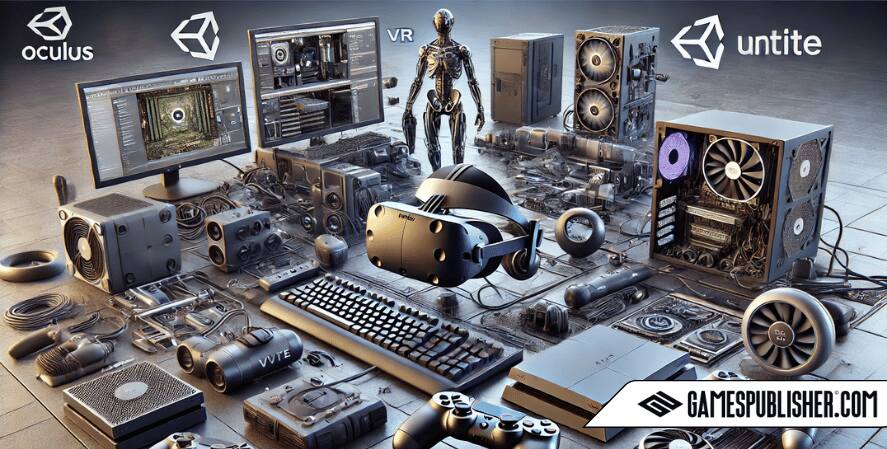
Hardware Requirements
VR Headsets and Controllers.
VR headsets (Oculus Rift, HTC Vive, PlayStation VR) and controllers are vital. They let you create immersive experiences. They provide visual and tactile feedback that enhances the sense of presence.
High-Performance PCs or Consoles
You need a powerful PC or console. To keep them smooth and make detailed graphics, they need to be used well. This is critical to prevent motion sickness and ensure a good experience.
Software Tools and Platforms
VR Development Tools
Game engines like Unity and Unreal Engine offer robust VR development kits. Unity is easy to use and ideal for indie developers. Unreal Engine excels at making high-quality graphics.
VR Platforms
Oculus, HTC Vive, and PlayStation VR are such platforms. They provide systems for selling and making money from VR games. Each has its own guidelines and tools to help developers optimize their games.
Design Principles for Immersive VR
User Interface (UI) and User Experience (UX)
Creating intuitive and user-friendly interfaces is key. UI elements should be easy to access without breaking immersion. Interactions must be smooth and quick.
Environmental Design
Realistic environments and sound design are crucial for immersion. Detailed textures, lighting, and spatial audio make the virtual world feel real. They enhance the sense of presence.
Motion and Interaction
Designing comfortable motion systems and natural interactions is vital. Ways, such as teleportation, can reduce motion sickness. Physics-based interactions make the game world feel real.
Technical Challenges and Solutions
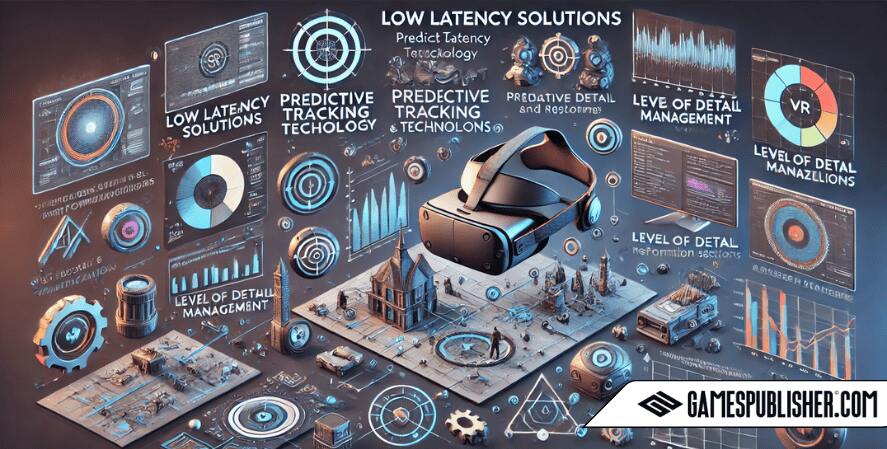
Latency and Performance Issues
Low Latency
Low latency is crucial to prevent disorientation and motion sickness. Techniques like predictive tracking help cut delays between user movements and in-game responses.
Optimizing Performance
Techniques make games run well. Examples include managing the level of detail and scaling resolution. They ensure smooth gameplay. Performance analysis tools can assist in detecting and resolving efficiency bottlenecks.
Ensuring Compatibility
Cross-Platform Development
Developing for multiple platforms requires addressing different hardware specifications and input methods. This involves extensive testing and platform-specific optimizations.
Compatibility with Various VR Headsets
Designing flexible and adaptable games ensures compatibility with different headsets. Scalable UI elements and customizable controls provide a consistent experience on all devices.
Case Studies of Successful VR Games
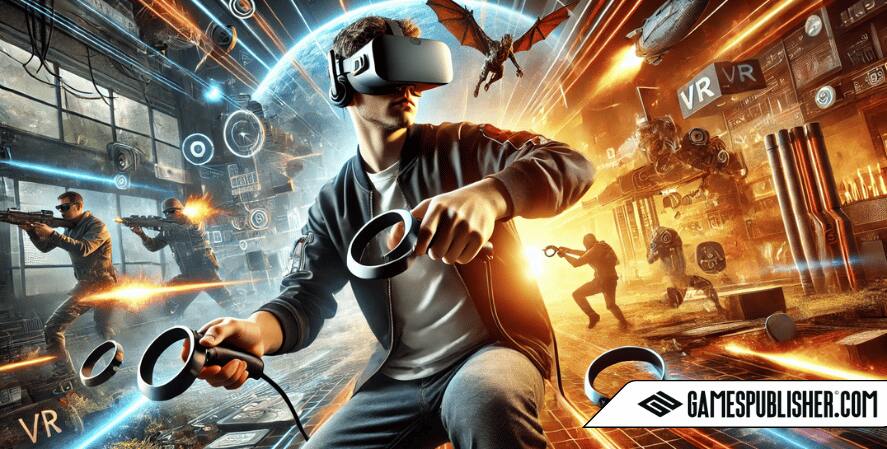
Analysis of Popular VR Games
Key Features of Immersive Games
“Half-Life: Alyx” offers detailed interactions and a compelling story. “Beat Saber” mixes rhythm with precise tracking. “The Elder Scrolls V: Skyrim VR” has a big open world for exploration.
Lessons Learned
Key lessons include focusing on environmental detail, responsive controls, and performance optimization. Using VR hardware, such as hand tracking and haptic feedback, can enhance immersion.
Future Trends in VR Gaming
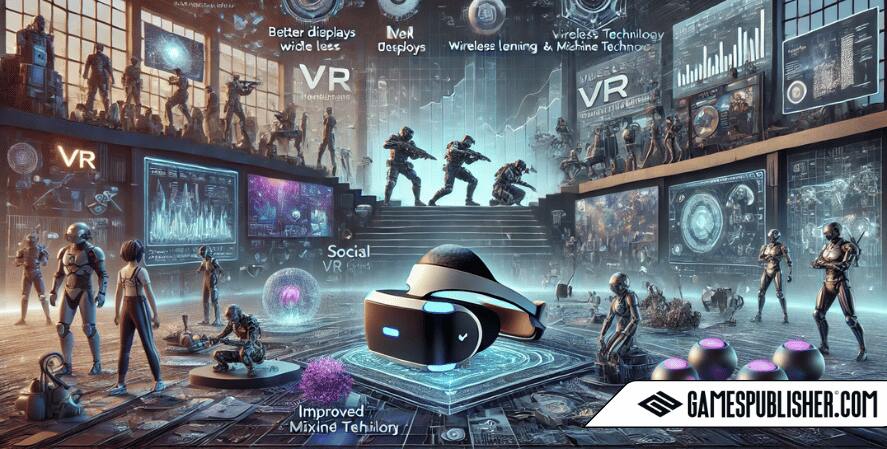
Emerging Technologies
Advancements in VR Hardware
Improvements such as better displays and wider lenses are making virtual reality better. Headsets are also going wireless. Haptic technology is also evolving, providing more tactile interactions.
AI and Machine Learning in Virtual Reality
AI can improve NPC behavior. Machine learning can optimize performance and personalize content. These technologies will play a big role. They will be important for the future of virtual reality gaming.
Predictions for the Future of VR
Future Virtual Reality Gaming Experiences.
Advancements in technology will lead to more realistic and immersive experiences. Social VR platforms and mixed reality will offer new ways to interact and be creative.
Industry Evolution
As VR hardware becomes more accessible, demand for high-quality content will grow. Developers, hardware companies, and publishers will work together to drive VR gaming innovation.
Conclusion
Developing immersive VR experiences requires a blend of technical and creative skills. The right tools and a focus on user immersion can help developers. They can create captivating VR games.
The potential for growth and innovation in VR gaming is immense. Stay tuned to Gamespublisher.com for more insights and updates on VR trends.
Loading survey...

